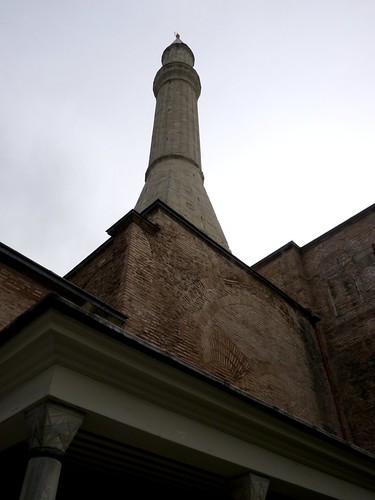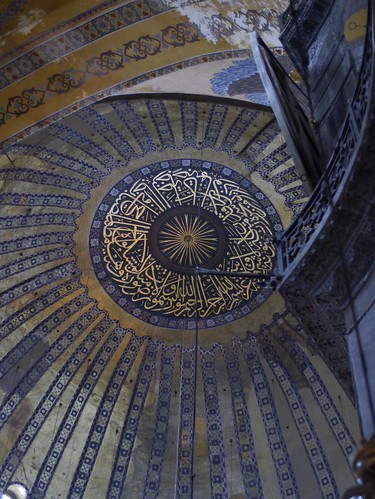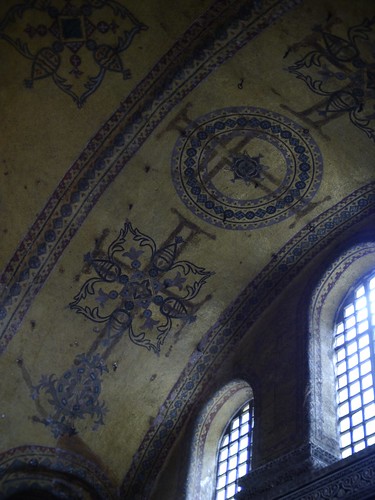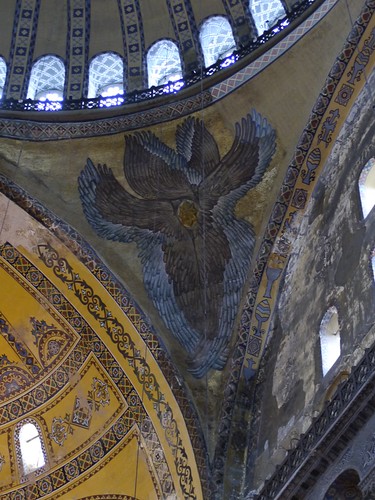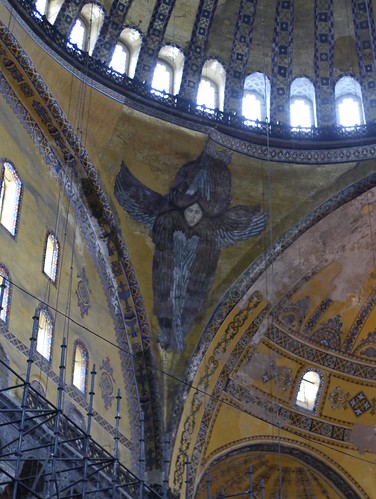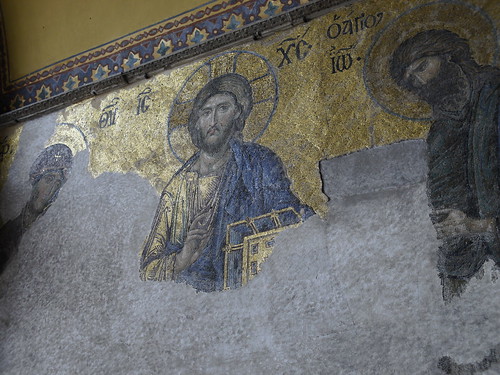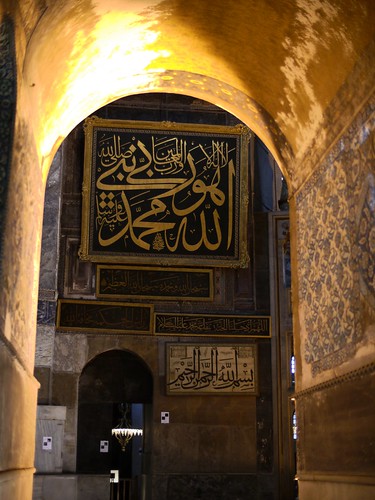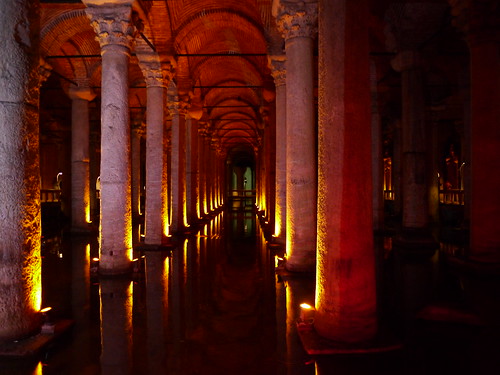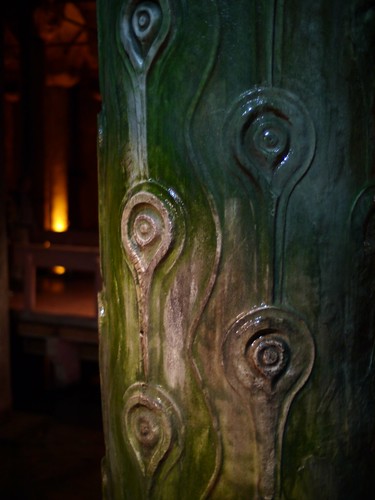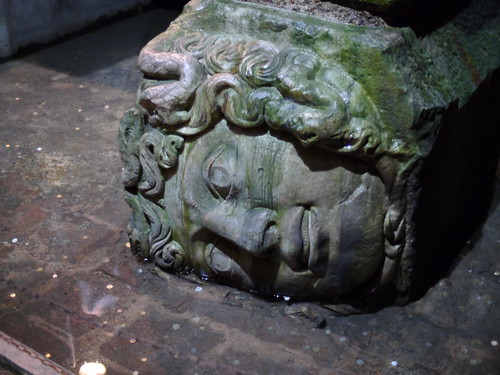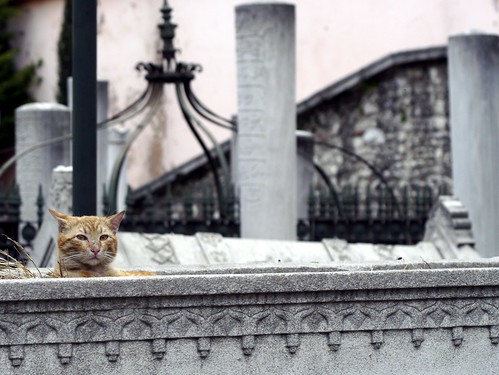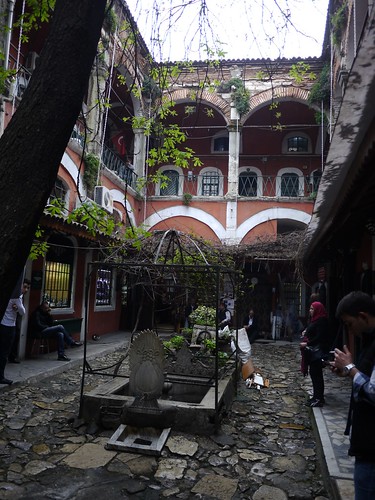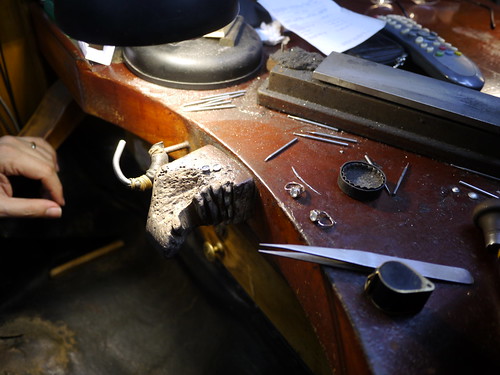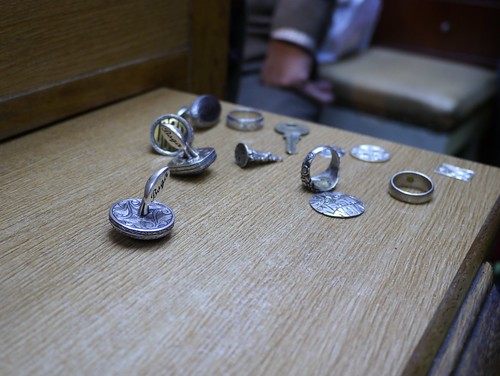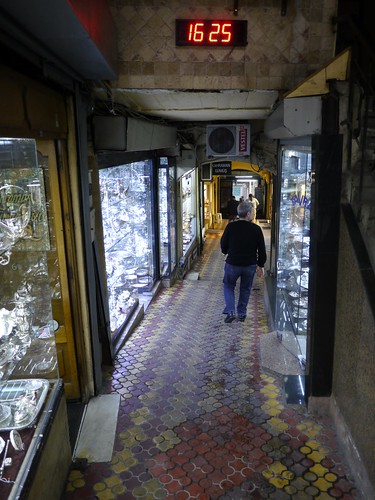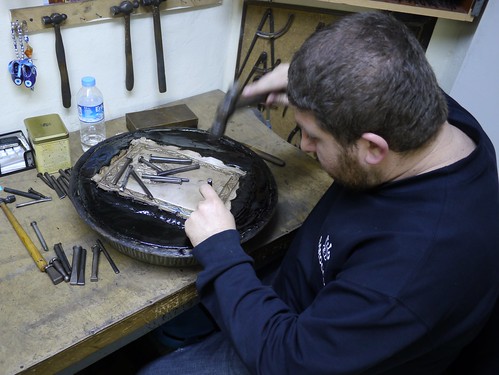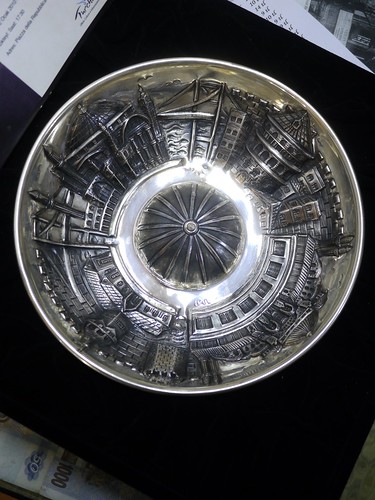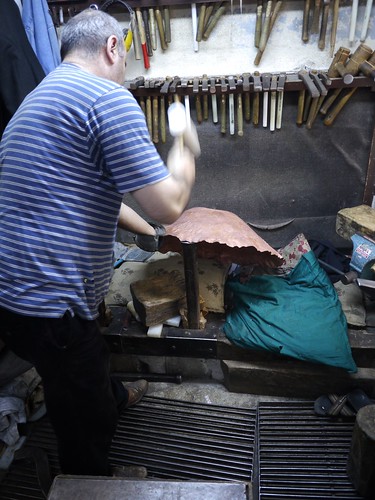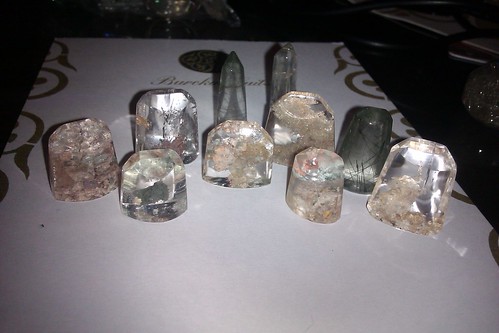The building is famous for its enormous Byzantine dome, dating from around 540 CE (AD) though there had been a church on the site for several hundred years previously, an impressive piece of architecture and for nearly a thousand years, the largest dome in the world, as well as for its crazy history of conversion to mosque and then to museum, during which things have been added, removed, painted over, uncovered...
Like Turkey itself and Istanbul especially, the Hagia Sophia is a mashing together of so many influences, themes, ideas and philosophies, a situation which I found incredibly exciting: primitive Christian crosses fade through the over-painted 15th Century Islamic designs:
Strange angels with their faces painted out - it being forbidden to represent the human body in Islamic art - have their faces reinstated:
I love the idea of the palimpsest, of things being erased to allow new creations and, most especially, of things fading, rusting, corroding. Hagia Sophia is, in a way, a monument to this more than anything else: crumbling mosaics, corroded metal doors, fading paint, the clash of imagery.
Next on my tourist agenda was the Basilica Cistern, the subterranean water tank which supplied water to Topkapi Palace until recent times.
The cistern is notable for having been constructed of various columns which have been "recycled" from older buildings and there is a range of styles of both column and capital. My own favourite is the single strange column looking like a de-branched tree:
A couple of the columns famously rest on Roman Medusa head sculpted plinths. The heads are beautiful examples of Roman art and it is odd to think that they spent so much of their time in the mud at the bottom of a water tank.
The heads are supposed to have been laid on their sides or upside-down to negate their fearsome powers of turning people to stone!
One of the features of the city which one can't fail to notice very quickly is the presence of thousands of feral cats (and very few dogs generally). The cats are everywhere and they seem to have developed a fine relationship with the humans in the city, paying them so little heed that after a while you stop noticing how many there are. This one surprised me in the Ottoman cemetery near the hotel:
The afternoon was spent back at the Grand Bazaar with Umut and Hrac, who gave me a tour of some of the more interesting jewellery places in the back alleys.
We first stopped at an absolutely minuscule workshop where a traditional diamond-setter and hand-engraver worked.
This was especially fascinating as I got to learn about the Ottoman method of setting rose-cut diamonds, using a pressed, polished piece of lead behind the stone to reflect the light back through the front. It was surprising to learn that this is still done and I did notice that the rose-cut and flat-backed, facet-topped stone was still very popular here, where it has been replaced largely by variants on the brilliant-cut in Europe and the US. Of course, I love these cuts... more on them later.
For anyone interested, it is worth having a look at this image at full size (click on it and it will take you to the Flickr page where you can do that). The lead cup is on the peg and the earrings with the rose-cut stones over the lead cup are on the top of the bench next to the loupe.
I think that the engraver was a bit annoyed that I wasn't as fascinated by his own excellent work!
As I mentioned yesterday, there are still lots of traditional Silversmiths in Turkey and we wandered off to a couple of the workshops which supply the markets like this:
First up was "Barocco", a wonderful, tiny workshop where a team of craftsmen of exceptional skill have been assembled to create some very striking works.
The very modest chap shown above created this dish to celebrate Istanbul's status as "European City of Culture" in 2010:
He made this dish in its entirety himself, but unlike some of the other workshops we visited, this company has a wide range of skills in their workforce. Upstairs, for example, lay the raising workshop:
Umut even had a shot at putting a course into this piece too! It is going to be a coffee urn when it is finished.
The industry here is still highly specialised. Unlike the UK, where I have to be able to make my own wire, set my own stones, engrave my own surfaces, and polish everything myself, in the Grand Bazaar and the surrounding "hans" there are people who specialise in everything. I could have spent weeks talking to these specialists - I would love to have had the time to speak to the jeweller I met in the polishing workshop who was laser-cutting gold - and would love to have access to this sort of specialism myself.
Wire-drawing bench outside a wire-drawing workshop in the Grand Bazaar.
We finished off the day by visiting a fantastic stone-dealer, where I bought rather a lot of stones, some speculatively but also some wonderful prehnite, sapphires and chalcedony for my "20000 Leagues" piece. Here are some lovely included quartzes which I brought back:
After this, Hrac took us to dinner in a restaurant where he knew the owner and Umut was flirted with by the oddest waiter I have ever encountered. The taxi journey home was so fast and so hair-raising that Ümran, Hrac's assistant, took a photograph of me as if I were riding a roller-coaster!

